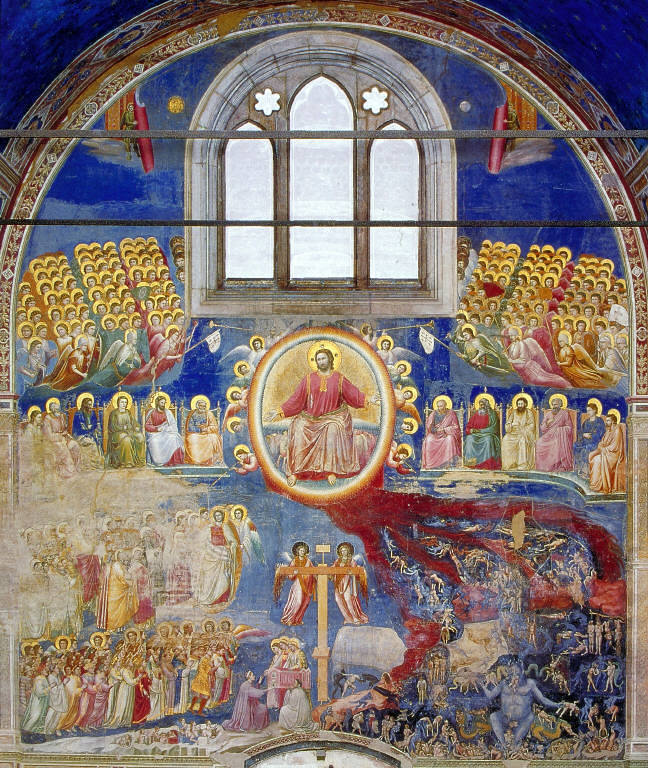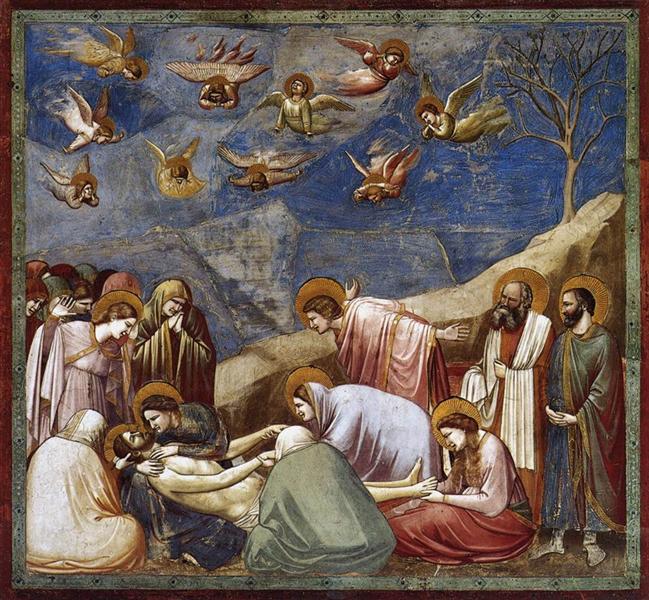Chapter 13: Gothic Art in Italy
Key Notes
- Time Period: 1250–1400
- Culture, beliefs, and physical settings
- Gothic art is a part of the medieval artistic tradition.
- Royal courts emphasized the study of theology, music, and writing.
- Gothic art avoids naturalism and emphasizes stylistic variety.
- Text is often incorporated into artwork from this period.
- Cultural interactions
- There is an active exchange of artistic ideas throughout the Middle Ages.
- There is a great influence of Roman, Early Medieval, and Islamic art on Gothic art.
- Audience, functions, and patron
- Works of art were often displayed in religious or court settings.
- Surviving architecture is mostly religious.
- Theories and Interpretations
- The study of art history is shaped by changing analyses based on scholarship, theories, context, and written records.
- Contextual information comes from written records that are religious or civic.
Historical Background
- Italy was divided into a spectrum of city-states, ruled by an assortment of princes, prelates, and the occasional republic.
- Citizens identified themselves as Sienese or Florentines.
- The varying geography and Italian dialects made the contrasts across states even more evident.
- Italian medieval politics, characterized as it is by routinely shifting allegiances that break into splinter groups and reform into new alliances.
- Those who lost power were either killed or driven from their city.
- Sometimes they regrouped and returned for revenge.
- Add to this military interventions from outside forces, such as the Holy Roman Empire or France, and medieval Italy becomes a complicated network of splintering associations.
Patronage and Artistic Life
- Guilds were artist associations that determined:
- how long apprenticeships should take,
- how many apprentices an artist could have, and
- what the proper route would be for an artist trying to establish him- or herself on his or her own.
- Female artists were rare.
- After a successful internship, former apprentices entered the guild as mature artists and full members.
- Guilds regulated commissions and prevented newcomers from lowering rates.
- The guild system remained in effect until replaced by the free-market approach that took hold in the eighteenth century.
- Artistic patronage was particularly strong among preaching orders of friars, such as the Franciscans, the devoted followers of Saint Francis of Assisi, and the Dominicans, the faithful followers of Saint Dominic de Guzman.
- Both groups abstained from material concerns and committed themselves to helping the poor and the sick.
- To instruct Christians, Dominicans commissioned story pulpits and altarpieces for their churches.
- In part dedicated to charismatic Saint Francis, the Franciscan mother church in Assisi features a trecento fresco program unmatched.
- Trecento: the 1300s, or fourteenth century, in Italian art
- Families commissioned artists to decorate private chapels.
- Analogously, rulers, church leaders, and civic-minded institutions led by laypersons commissioned works for public display, using them to legitimize their reign or express their public generosity.
Italian Gothic Painting
- The flatness of medieval wall paintings encouraged frontal, linear compositions.
- Late Gothic painters shade people realistically and aim for three-dimensionality.
- Artists first used the maniera greca or Italo-Byzantine to portray images.
- Maniera greca: (Italian for “Greek manner”) a style of painting based on Byzantine models that was popular in Italy in the twelfth and thirteenth centuries
- However, Florentine artists, especially Giotto and his successors, started to move away from this tradition and toward a distinct reality that substantiated bulk and anchored figures to ground lines.
- Expressions and gestures intensify emotions.
➼ Arena (Scrovegni) Chapel
Details
- Unknown architext
- c. 1303, brick
- Found in Padua, Italy
Context
- The Arena Chapel was built by an unknown architect over an ancient Roman arena.
- It is also called the Scrovegni Chapel after the name of the patron, Enrico Scrovegni.
- It was built to expiate the sin of usury through which Scrovegni’s father amassed a fortune; shows the rise of patronage from the European business class.
- Some narrative scenes illustrate biblical episodes of ill-gotten gains.
- The life of Christ appears on one side of the chapel, the life of Mary on the other.
Image

➼ Last Judgment from the Arena Chapel
Details
- Painted by Giotto
- 1305
- A fresco painting.
- Found in Padua, Italy
- Last Judgment: in Christianity, the judgment before God at the end of the world
Content
- Christ as judge, coming at the end of the world.
- Heavenly powers are arranged in an organized chorus; heads aligned in a row.
- Twelve apostles are arranged symmetrically around Christ.
- Cross at bottom center divides the saved from the damned.
- On the side of the saved is Enrico Scrovegni in his role as donor presenting a model of the church to angels.
- At right is the devil, who eats and excretes sinners.
- Those guilty of usury or money-related sins like prostitution are particularly noted.
Image:

➼ Lamentation from the Arena Chapel
Details
- Painted by Giotto
- 1305
- A fresco painting.
- Found in Padua, Italy
- Lamentation: scenes that show Jesus’s followers mourning his death. Usually the scene contains Mary, Saint John, and Mary Magdalene
Form
- Shallow stage; figures occupy a palpable space pushed forward toward the picture plane.
- Diagonal cliff formation points to main action daringly placed in lower left-hand corner.
- Modeling indicates direction of light; light falls from above right.
- Figures seen from the back isolate the main action.
Content
- Lamentation shows scenes of Jesus’s followers mourning his death. Usually the scene contains Mary, Saint John, and Mary Magdalene.
- Saint John throws his hands back—recalling his iconographic symbol as an eagle; Mary Magdalene cradles Jesus’s feet; Mary holds Jesus’s head.
- At left is the Old Testament scene of Jonah being swallowed by the whale and returning to life, a parallel with the New Testament scene of Christ dying and rising from the dead.
- Range of emotions: heavy sadness, quiet resignation, flaming outbursts, despair.
- Sadness of scene emphasized by grieving angels.
- Leafless tree echoes the theme of death in the painting; also represents the tree of the knowledge of good and evil in the Garden of Eden, which dies after Adam and Eve are expelled; a dead tree also symbolizes the wood of the cross Jesus was crucified on.
- Christians believe Jesus sacrificed himself, in part, to expiate the expulsion from the Garden of Eden.
Image
